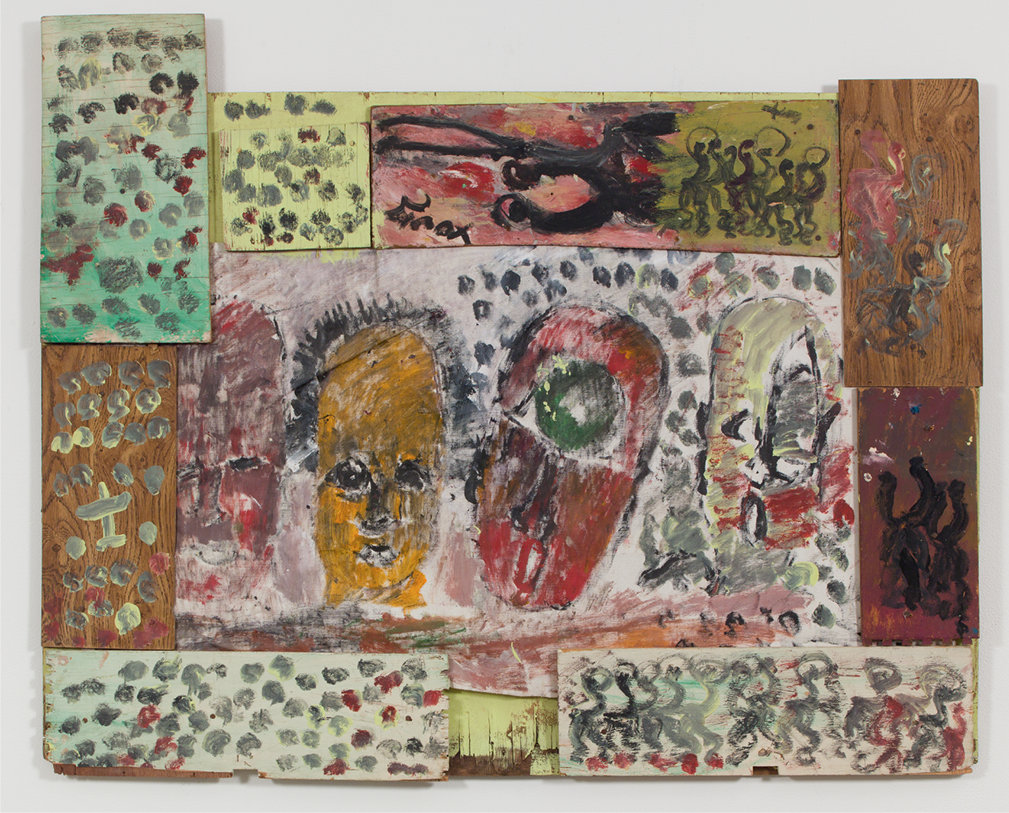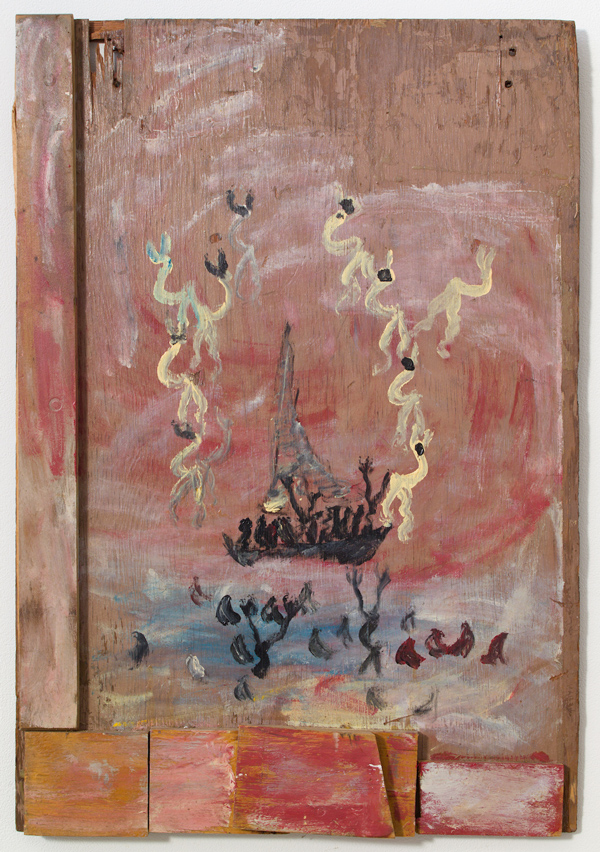A single black scrawl—Young—hovers over painting after painting. It may cover the side of a building or a truck—and indeed the artist hung his work on the outside of abandoned buildings, as an uneasy compromise between an exhibition and graffiti. It may float just out of reach of the black actors below. Both seem to embody the madness of youth under pressure. There is a riot going on, and both the rioters and the city will suffer. But then they have suffered enough already.
Of course, it is only the artist’s signature. It just refuses to settle neatly into the lower edge of a painting—much like anything else by Purvis Young. His African Americans have been reduced almost to stick figures, but that does not keep them from gesturing hopefully or wildly. They might be reaching for freedom, for help, for one another, or for the sky. They and everything around them are in motion, even buildings. The slit-like apartment block windows repeat the weave and the blackness.
Young worked on found wood, in black and an often fiery red, and he affixed thicker pieces to the edges, like a frame. Then he painted on those, too. Sometimes they show faces, like insets in a larger picture. They might spell out the humanity of those caught up in events only partly of their own making.
Young, who died in 2010, kept his distance from New York, and is often labeled as an outsider artist. Born in 1943, he had national aspirations, depicting inner-city events in his work, like in Miami’s Overtown, where he lived and worked. His scrappy assemblage accords with that of other African Americans, like Thornton Dial or Lonnie Holley.
All that motion makes Young hard to pin down. I think of the men as rising up, mostly because he worked in the shadow of Miami and Detroit. I think of them as men, but only because of their excess of testosterone—or because the faces are always male. I think of them as black because they are literally black, but then the larger faces are of every color, including yellow and red. Are they the same cast in close-up? They could be ever so proper adults, commenting sanely or officiously on the action.
Other allusions fly past just as quickly. The boats could carry slaves from Africa or refugees from Southeast Asia, and some figures appear in chains or halos. The assemblage throws in plastic or receipts, but receipts of what? Young can be clumsy and infuriating, but so for him was life. For 25 years, in work here through the mid-1990s, little seems to change, but so, too, was the pace of change in America. He still captured the motion and the energy.



